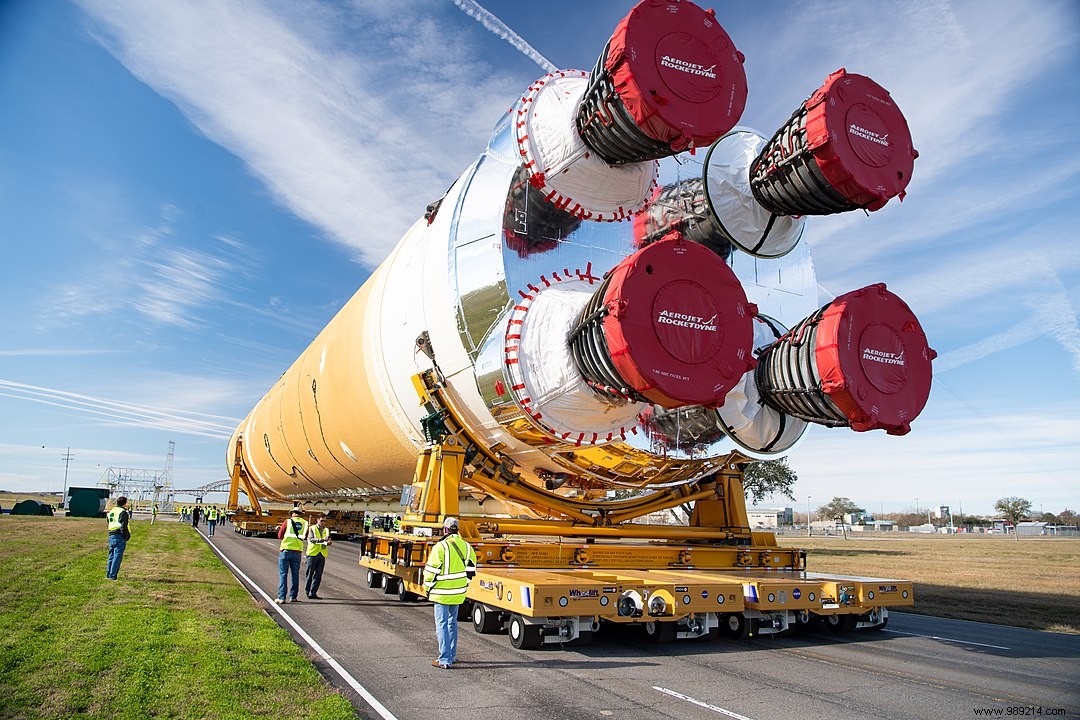NASA plans to conduct a hot-firing test of the SLS's center stage – its superheavy launch vehicle tasked with sending crews to the Moon – next January 17. During this test, the booster's four main engines will burn for approximately eight minutes.
The Space Launch System (SLS) is a launch vehicle developed by NASA since 2011 with the aim of propelling humans to the Moon. With its 98 meters high , it will be slightly shorter than the 110-meter-tall Saturn V rockets deployed to send astronauts to the Moon in the 1960s and 1970s. On the other hand, this new launcher is significantly more powerful , producing 15% more thrust during takeoff and climb.
Its first flight is normally scheduled for next November. During this highly anticipated mission – dubbed Artemis I – the rocket will be tasked with releasing an unmanned Orion capsule into space. It will then circle the Moon before returning to Earth.
That being said, NASA and Boeing (the prime contractor) have been testing the booster for this rocket (64 meters high) for several months as part of the "Green Run,” in Mississippi. These tests (eight in total) are increasing, so as to ensure that everything is ready for the month of November.
A few days ago, the engineers ran a "wet dress rehearsal" test, the seventh in his schedule. During it, the thrusters were filled with liquid hydrogen and liquid oxygen cooled to ultra-low temperatures. The engineers then checked the fuel filling phase, then the thrusters were successfully drained.
“In our wet dress rehearsal test, the main stage, stage controller, and Green Run software all performed flawlessly. There were no leaks when the tanks were fully charged and filled for approximately two hours ” , says Julie Bassler, launcher manager at NASA's Marshall Space Flight Center (Alabama). "The data from all the tests to date has given us the confidence to go forward " .

NASA can now consider its eighth and final test , during which the four RS-25 engines of the SLS (modernized versions of the SSME engines of the American space shuttle) will be fired for more than eight minutes, so as to simulate the performance of the booster during the upcoming launch. This should take place on January 17, NASA has just communicated. When these engines fire, the SLS will then become the most powerful "wick" ever lit on Earth.
Once this test has been completed, the main stage of the SLS will be refurbished and shipped to Kennedy Space Center, Florida. It will then be assembled with the other parts of the rocket, then the Orion spacecraft will be capped on it while waiting for the Artemis I mission.